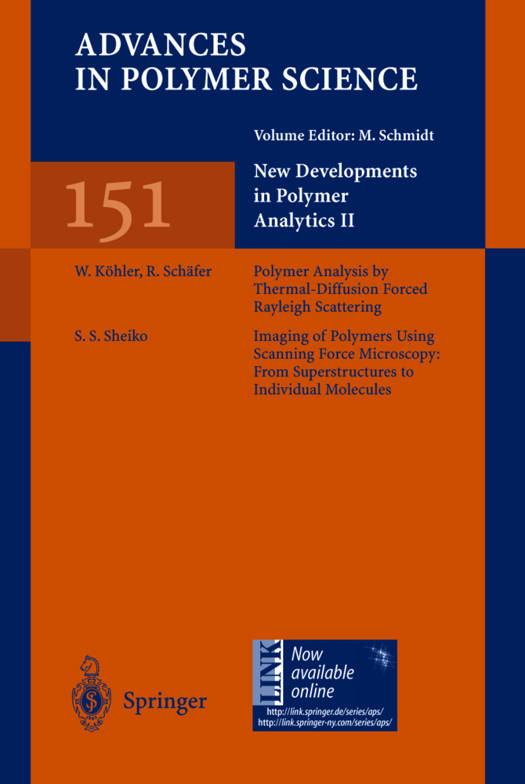
- Afhalen na 1 uur in een winkel met voorraad
- Gratis thuislevering in België vanaf € 30
- Ruim aanbod met 7 miljoen producten
- Afhalen na 1 uur in een winkel met voorraad
- Gratis thuislevering in België vanaf € 30
- Ruim aanbod met 7 miljoen producten
Zoeken
New Developments in Polymer Analytics II
€ 158,45
+ 316 punten
Omschrijving
The two volumes "New Developments in Polymer Analytics" deal with recent progress in the characterization of polymers, mostly in solution but also at s- faces. Despite the fact that almost all of the described techniques are getting on in years, the contributions are expected to meet the readers interest because either the methods are newly applied to polymers or the instrumentation has achieved a major breakthrough leading to an enhanced utilizaton by polymer scientists. The first volume concentrates on separation techniques. H. Pasch summarizes the recent successes of multi-dimensional chromatography in the characteri- tion of copolymers. Both, chain length distribution and the compositional h- erogeneity of copolymers are accessible. Capillary electrophoresis is widely and successfully utilized for the characterization of biopolymers, particular of DNA. It is only recently that the technique has been applied to the characterization of water soluble synthetic macromolecules. This contributrion of Grosche and Engelhardt focuses on the analysis of polyelectrolytes by capillary electopho- sis. The last contribution of the first volume by Coelfen and Antonietti sum- rizes the achievements and pitfalls of field flow fractionation techniques. The major drawbacks in the instrumentation have been overcome in recent years and the"triple F techniques" are currently advancing to a powerful competitor to size exclusion chromatography.
Specificaties
Betrokkenen
- Uitgeverij:
Inhoud
- Aantal bladzijden:
- 190
- Taal:
- Engels
- Reeks:
- Reeksnummer:
- nr. 151
Eigenschappen
- Productcode (EAN):
- 9783540660781
- Verschijningsdatum:
- 18/11/1999
- Uitvoering:
- Hardcover
- Formaat:
- Genaaid
- Afmetingen:
- 156 mm x 234 mm
- Gewicht:
- 476 g

Alleen bij Standaard Boekhandel
+ 316 punten op je klantenkaart van Standaard Boekhandel
Beoordelingen
We publiceren alleen reviews die voldoen aan de voorwaarden voor reviews. Bekijk onze voorwaarden voor reviews.










